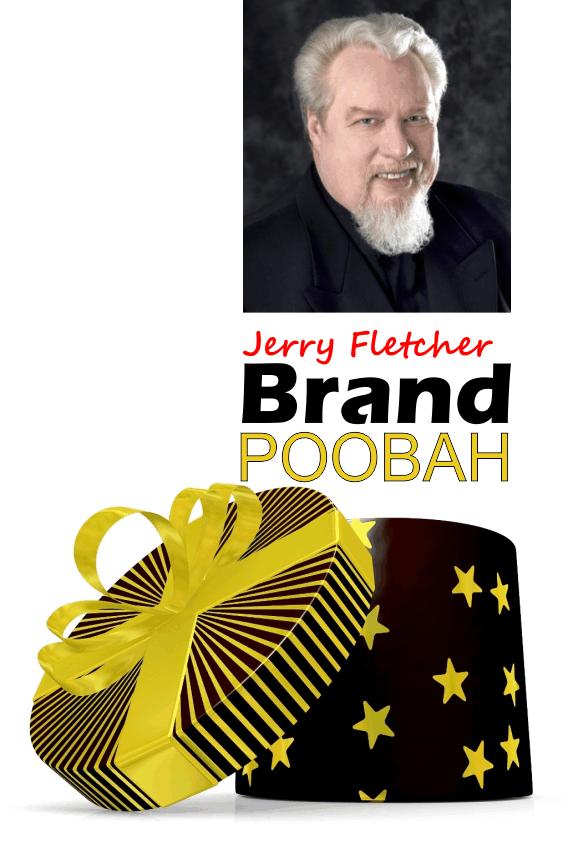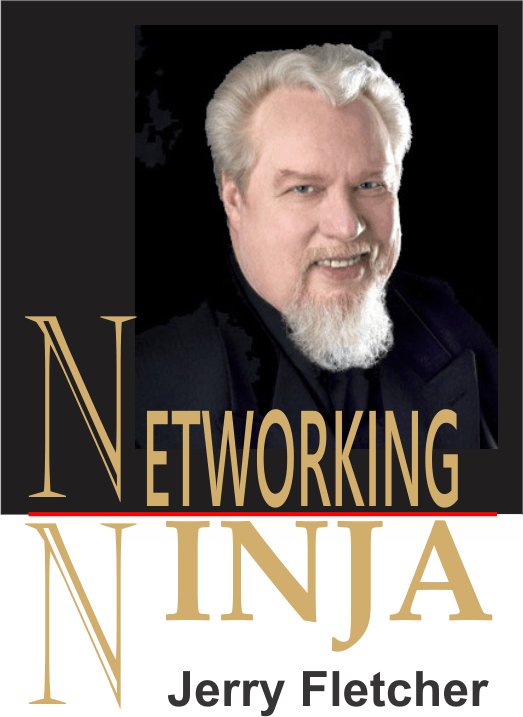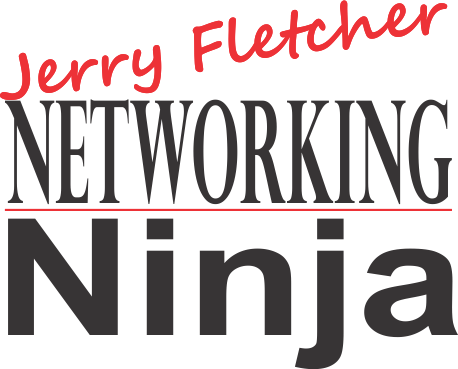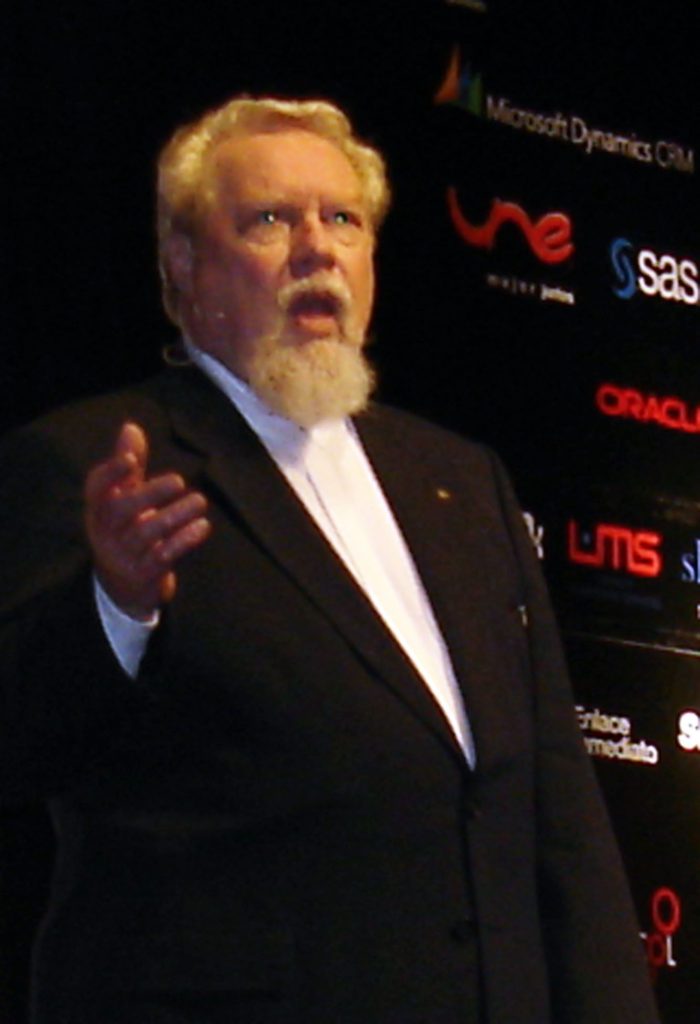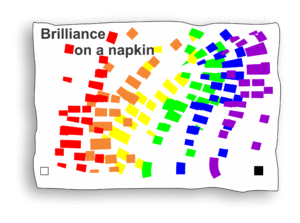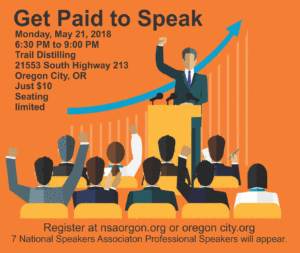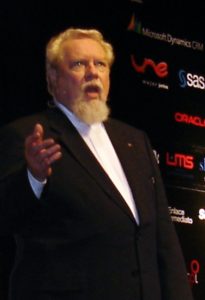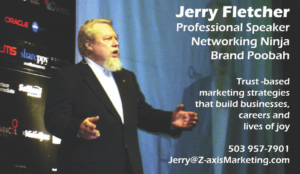
When people ask what I do I answer:
“I’m a master of consultant marketing.
You know how everybody tells you how you have to be memorable but nobody tells you how to do it?
What I do is guide independent professionals to a unique trust-based strategy to build their business, their brand and a life of joy”
What is a life of joy?
The entrepreneur, just starting out sees it one way, the guy or gal with some time in the trenches another. The elation with the job when you are new to the business will fade over time but if you are really cut out to be a sage advisor the delight of finding hidden profit and revealing ways to solve problems will stick with you.
One life is all you’ve got.
Joy comes not only in the work but also in the rest of your day, week, month or year. You have only one schedule. You need to look at building your days and your calendar so that there is time to smell the roses, play a round of golf, take a hike, coach some kids and give back to the community. There is more to life than work.
I was a workaholic when I was in the corporate world. I figured that if you run a company you damn well better set the standard. I was in before 8 and seldom left before 6 each day and then usually with a full briefcase. Saturday was the day for catch up. Sunday was for resting up for the coming week.
Revenue is not what it is all about.
As the CEO of a thriving ad agency billing over 50 Million I had a full complement of folks to do the work necessary to maintain a reputation that caused high tech start-ups to seek us out. There was always more work. But there never seemed to be time for my family and friends. I couldn’t pull back, fearing a loss in revenues for the business and in personal income.
An involuntary step off the treadmill
Then came the day my board and I agreed to disagree and they asked me to leave. I became a solopreneur. I found out what its like to have to do everything. I learned Word and Excel and Power Point to stay in business. I found a program called Quatro Pro that was the first to make it possible to link spread sheets. I wrote my own accounting system using it. And then a client needed a better way to assess potential sales given data available for every major city they served. No one had ever looked at it that way before.
Technology can set you free.
If you did annual projections manually, you could save days doing the same job and still more days when you had to revise the data. Those days saved became opportunities I’d never considered before.
For starters I got my Saturday’s back. I’d go play golf in the morning and spend the afternoons at my daughter’s soccer games. We’d go hiking on Sunday afternoons after attending services at the church we helped found. The time just naturally became available to volunteer at the metro chamber of commerce. Along with a handful of others we formed the local chapter of the National Speakers Association. I was asked and accepted the position of marketing chair for the local chapter of the Institute of Management Consultants. I began speaking and taught at two local universities.
None of that would have been possible if I had clung to a corporate ladder either here in Portland or in another city.
Technology gave me time. A mindset shift gave me joy.
These are the memories that stand out:
- “Wow, Dad I didn’t know you could do that!” the first time my daughter saw me step up on the platform and deliver.
- “I really appreciate you driving me up here to Seattle for this book fair and being there in the front row for my reading. Its so much better than when you were always working.” The Dragon Lady, my ex-wife who wrote books about dragons.
- When my Mom said, “It’s so nice of you to fly all this way to have Thanksgiving with us.”
- The comment that came from friend introducing me, “Jerry tells me that the reason he has products as a speaker is that folks just want to take piece of you home with them.”
- Being stopped just five minutes into a get acquainted meeting with the Managing Director of a four continent event planning company so he could ask, “Would it be all right with you if we added you to our list of speakers we promote?”
A door made me a family man.
When you office in your home the tendency is to work at all hours. Going back to your desk for “just a few minutes” after dinner can become much too regular. So, I set hours like any business. I said I was going to be open for business from 9 AM to 5PM.
The trick was putting the computer to sleep at 5 PM getting up from the desk and closing the door of the office. That gave me some time n the kitchen to catch up on everyone’s day, get the schedule for the next day and get to know a wife and daughter better than before.
The choice is yours.
You can build a business, a brand and a life of joy.
They are not mutually exclusive.
Each has its own place.
Each contributes to the other.
The mix is up to you.
And so it goes.
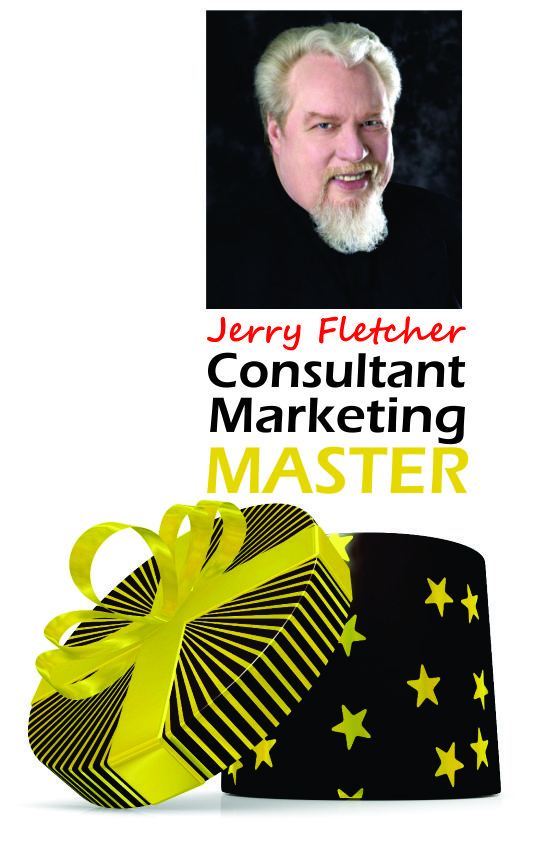
Jerry Fletcher is a sought-after International Speaker, a beBee ambassador, founder and CEO of Z-axis Marketing, Inc.
His consulting practice, founded in 1990, is known for on and off-line Trust-based Consultant Marketing and Brand development advice that builds businesses, brands and lives of joy.
Consulting:
www.JerryFletcher.com
Speaking: www.NetworkingNinja.com


